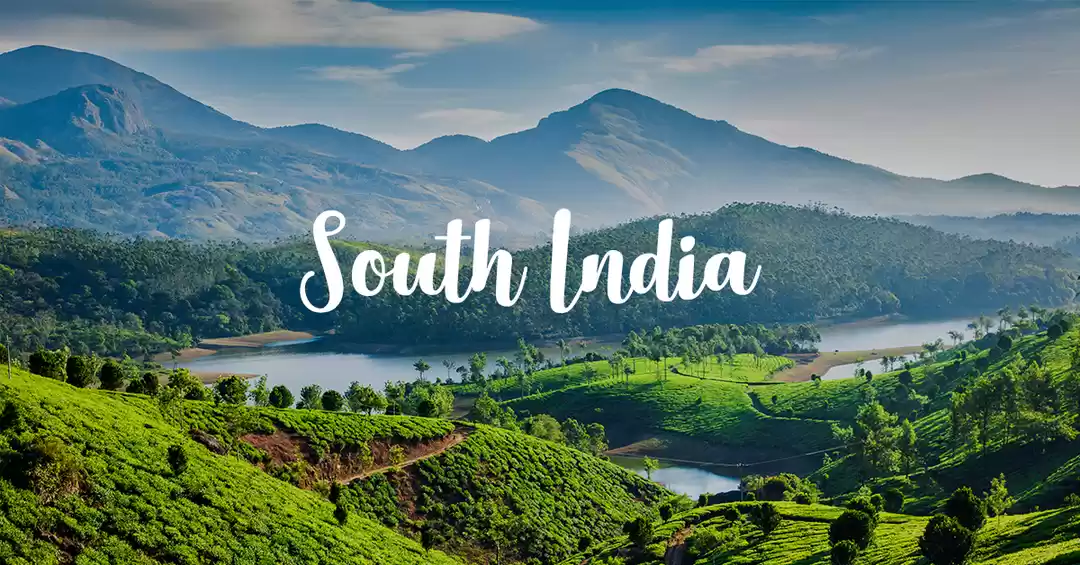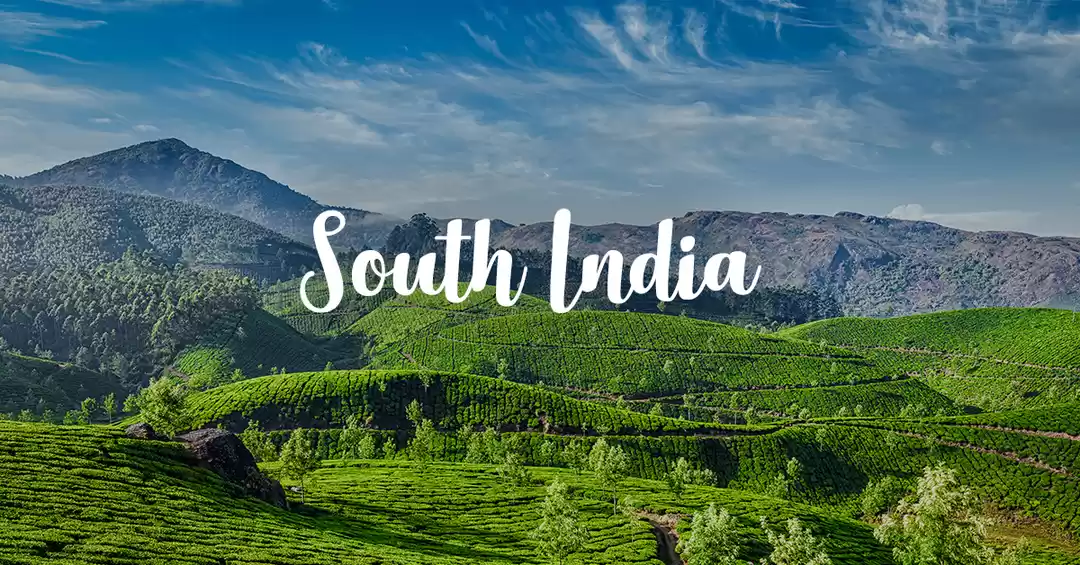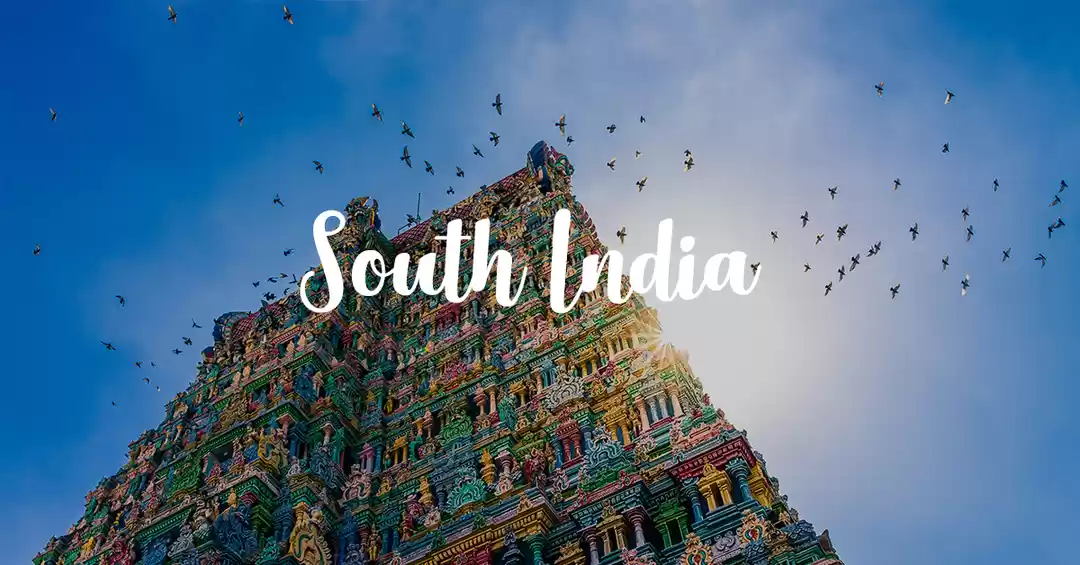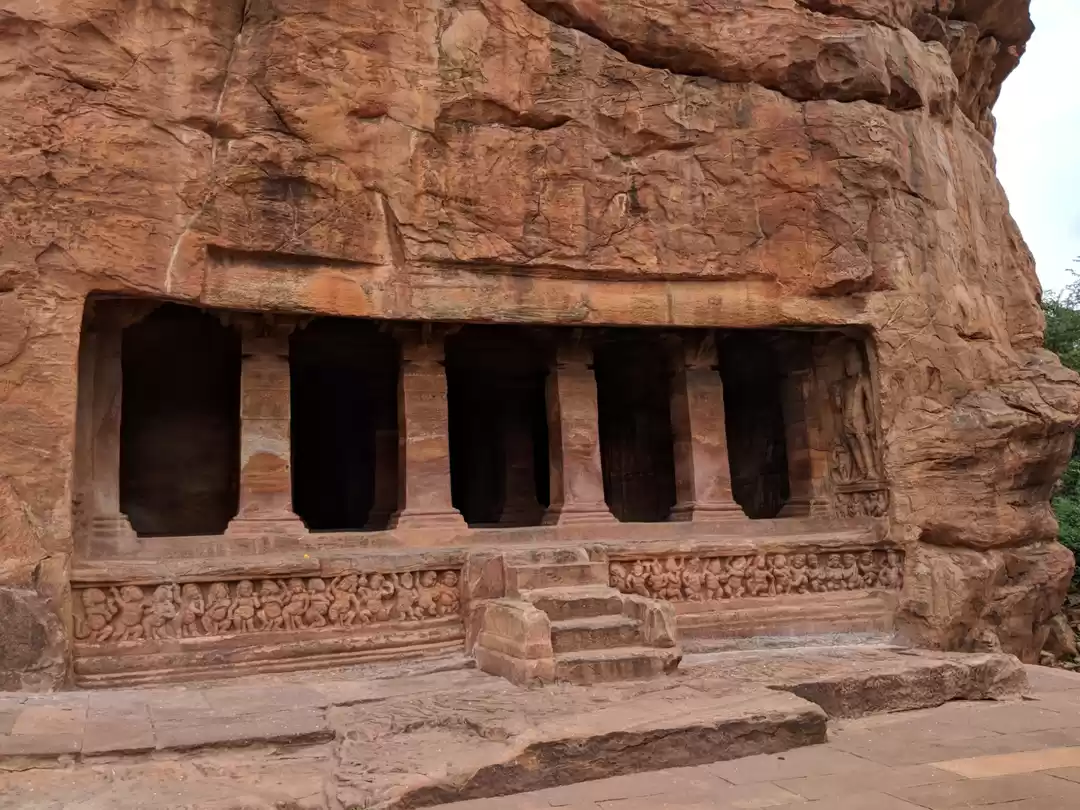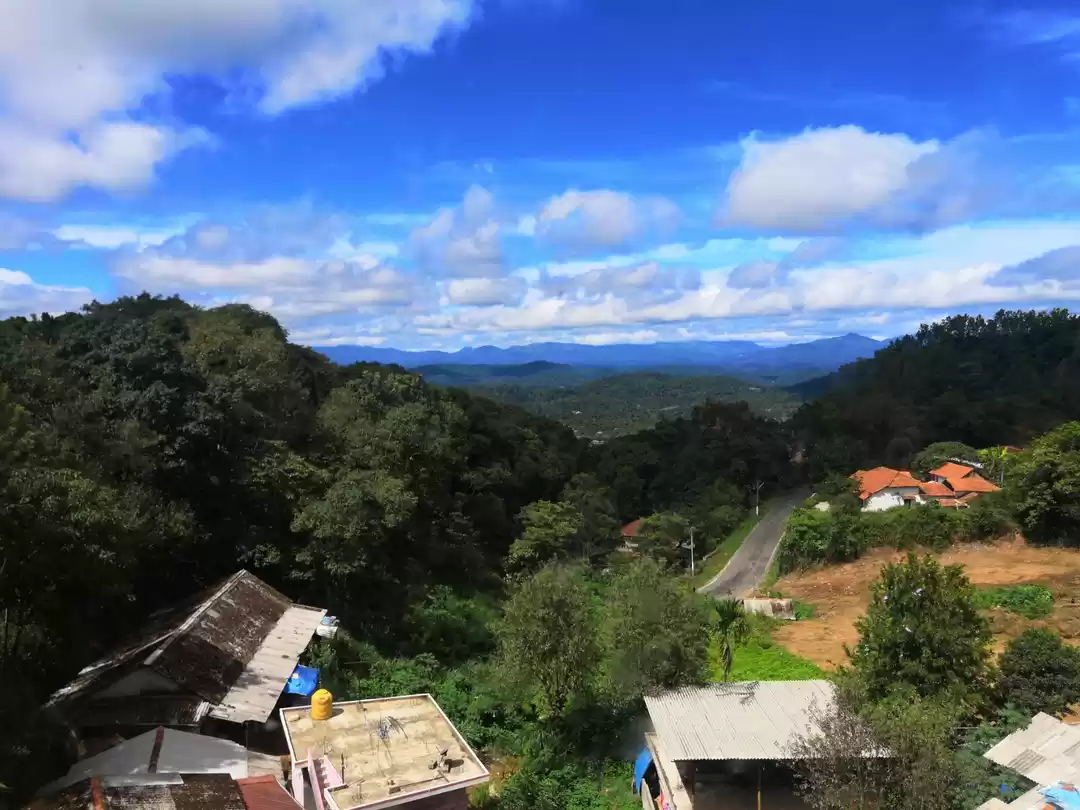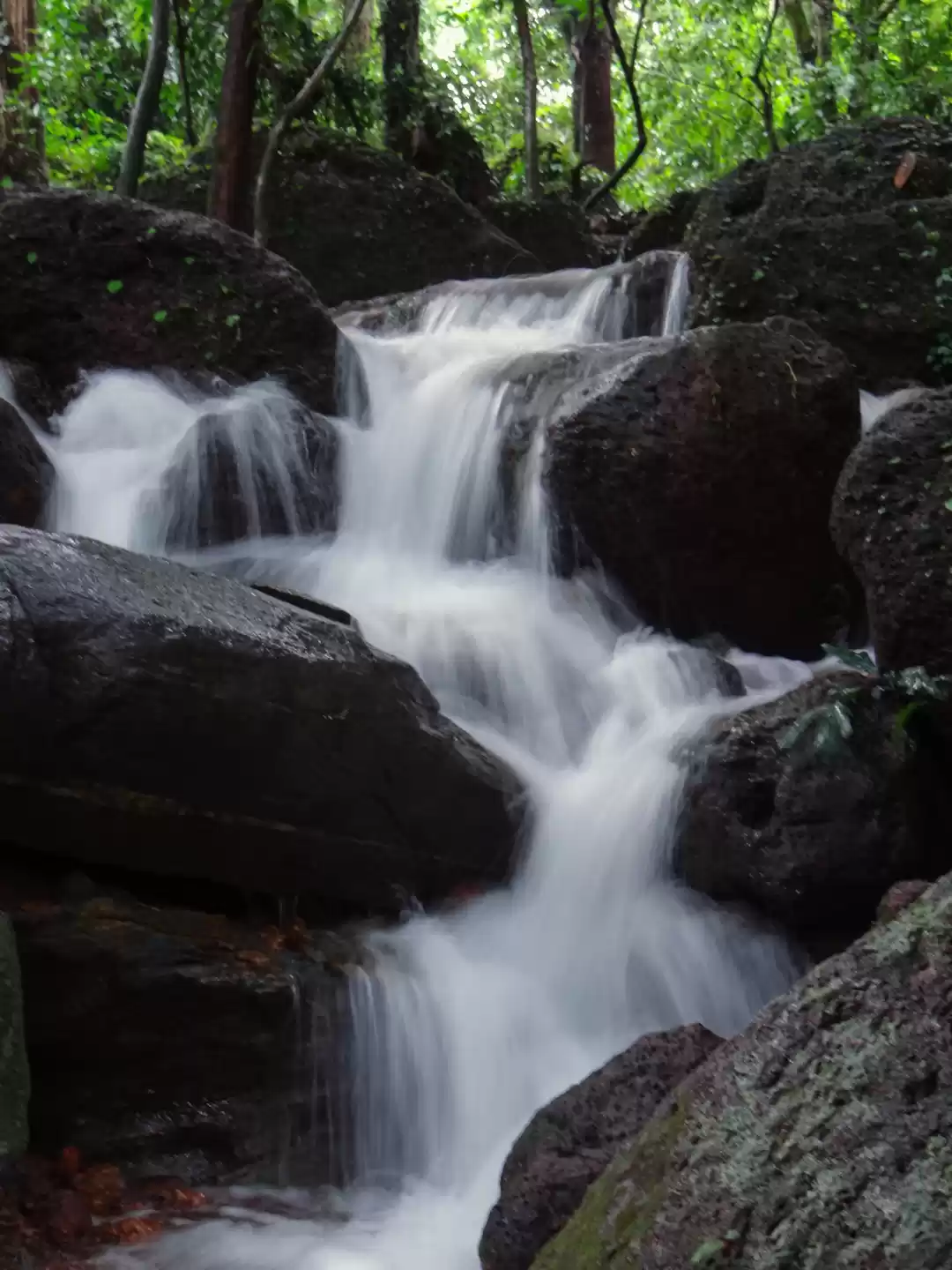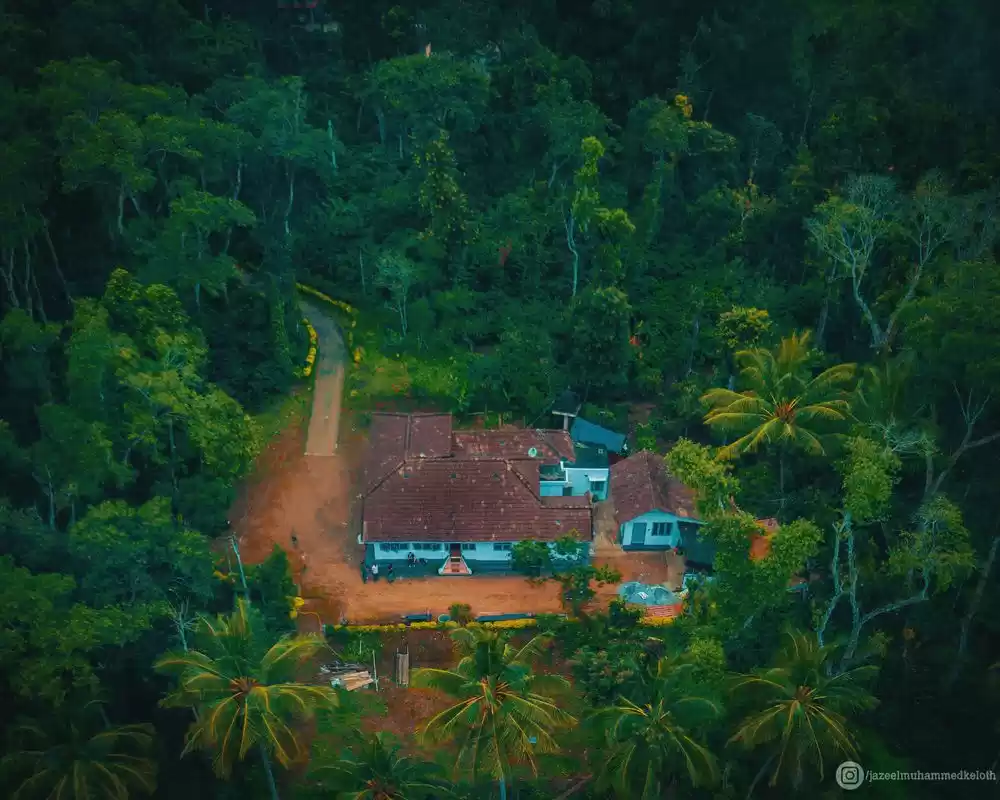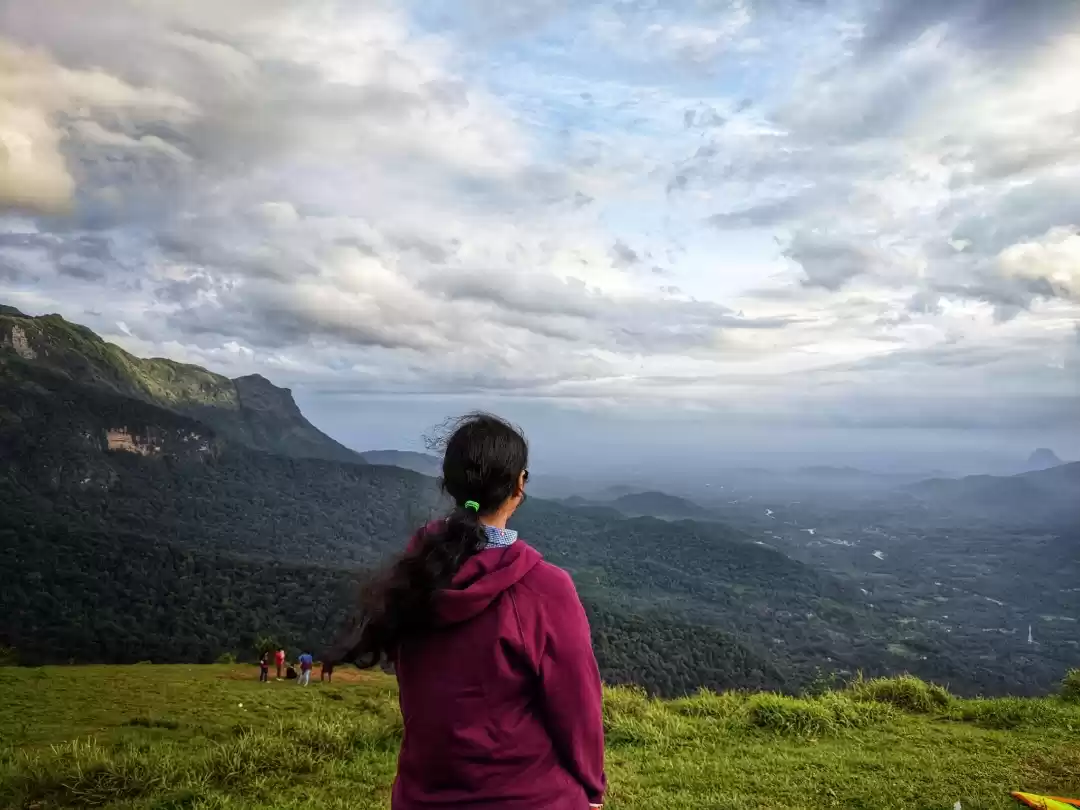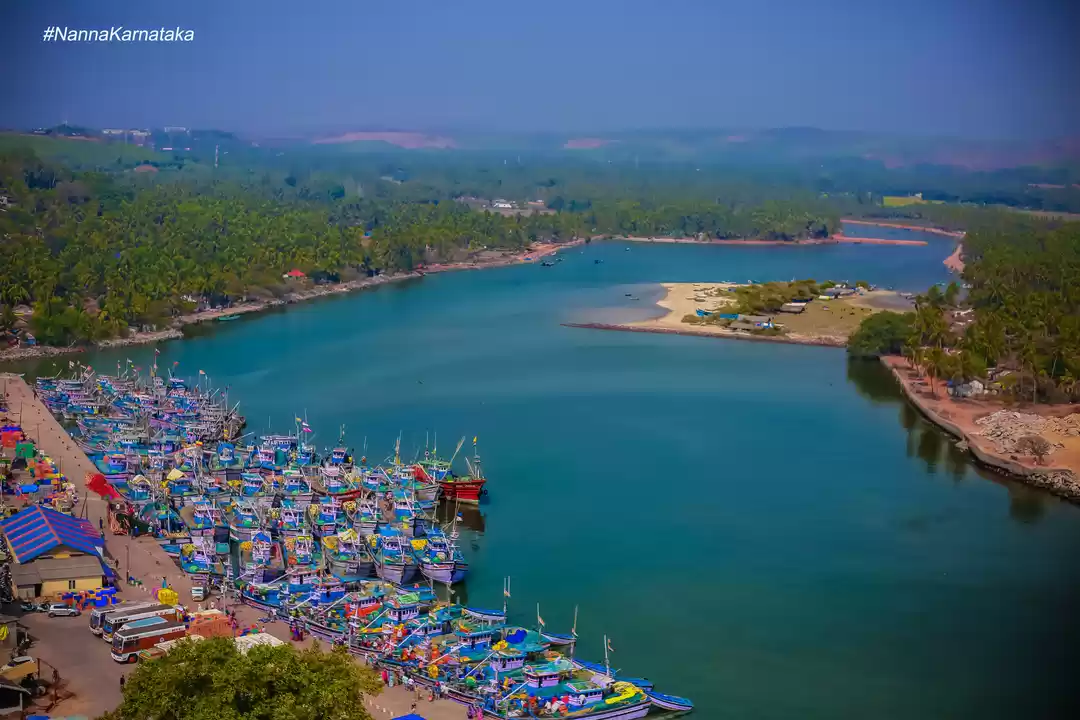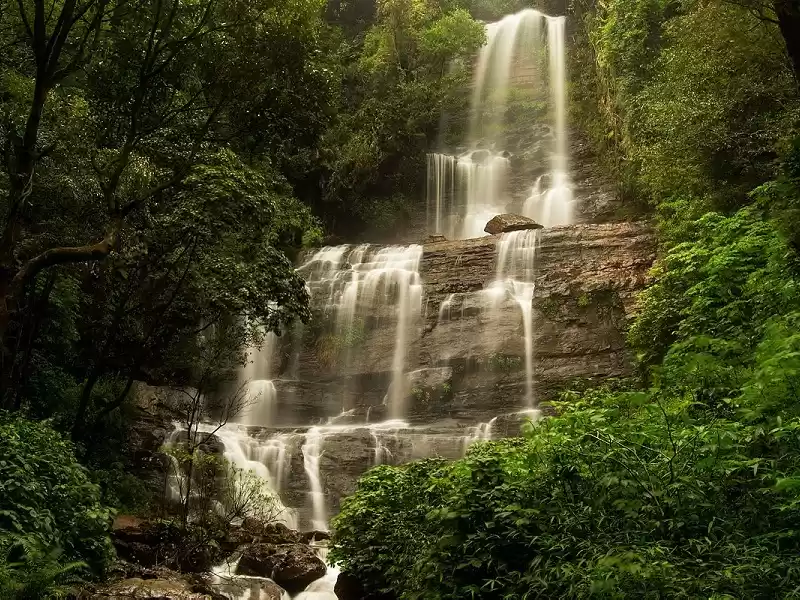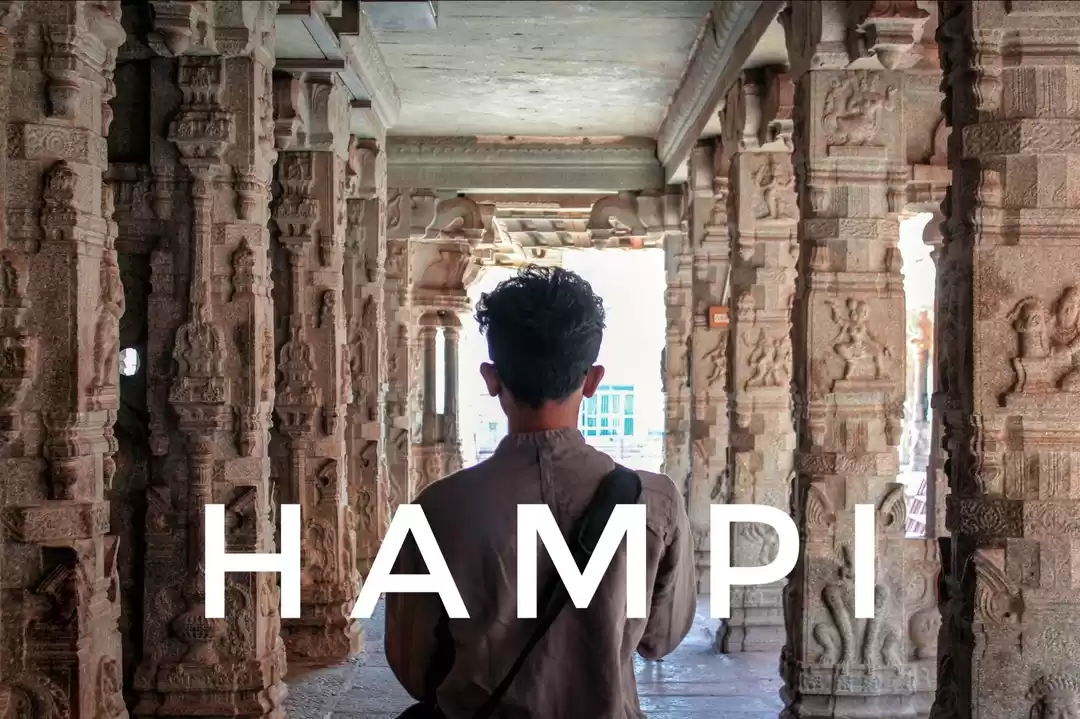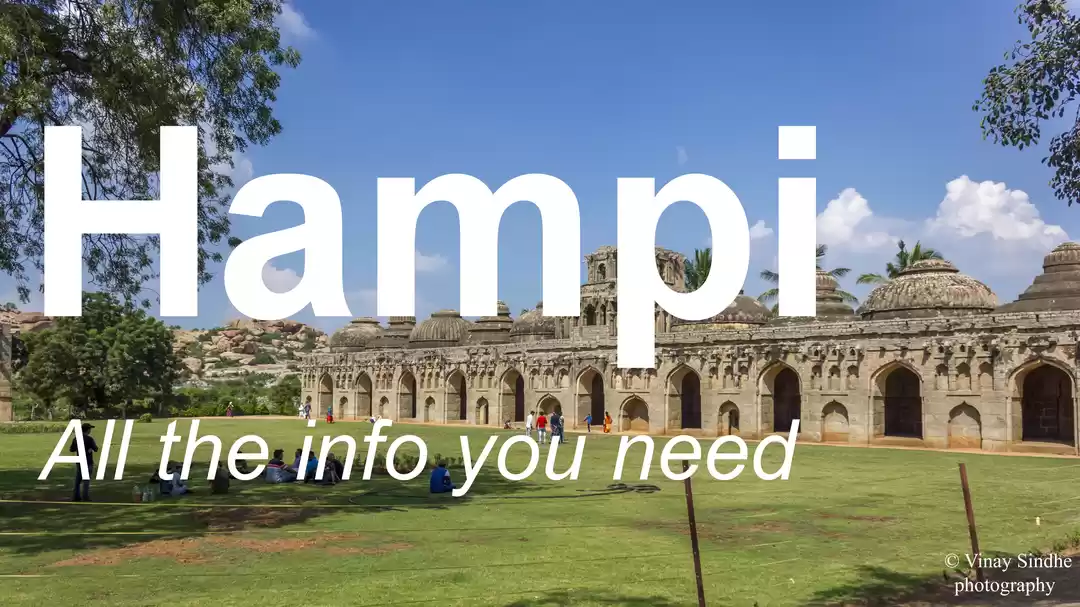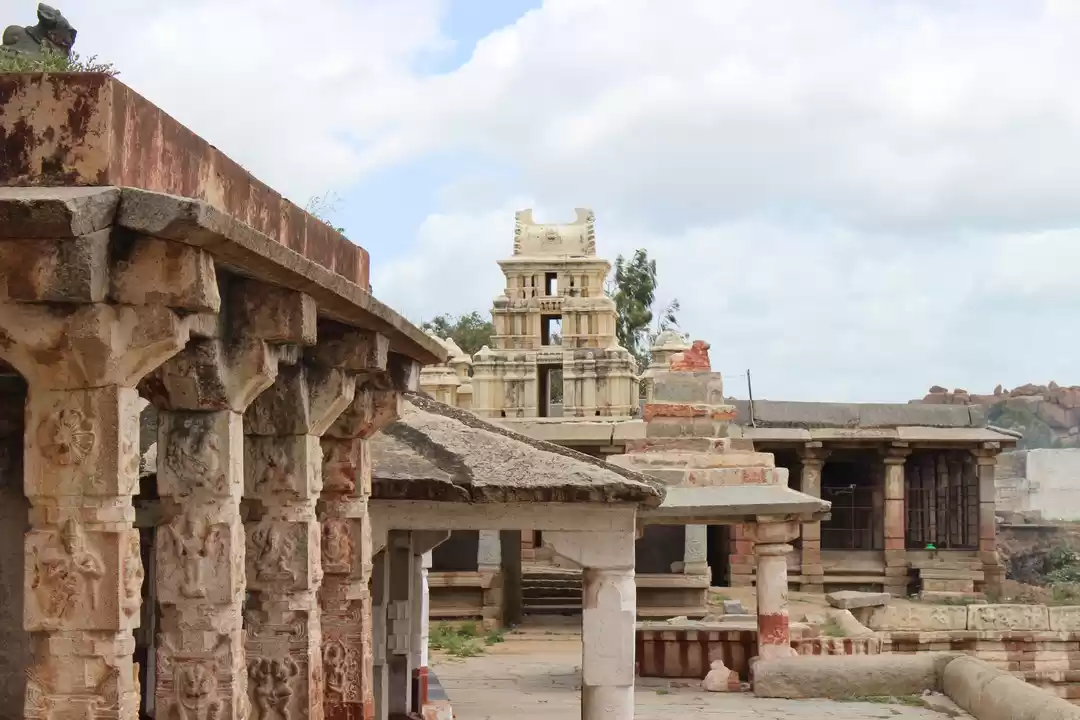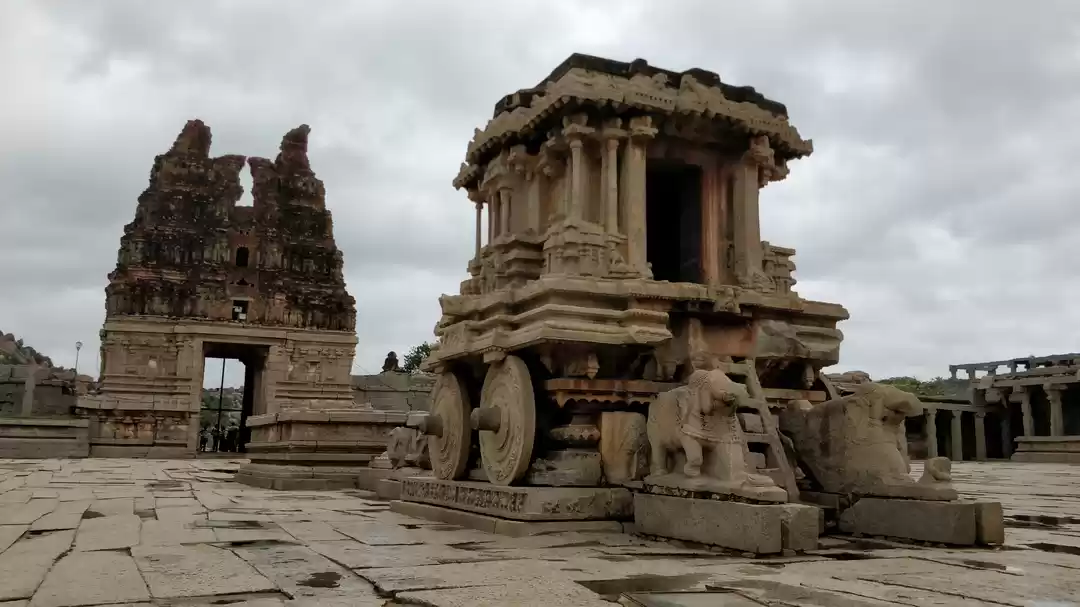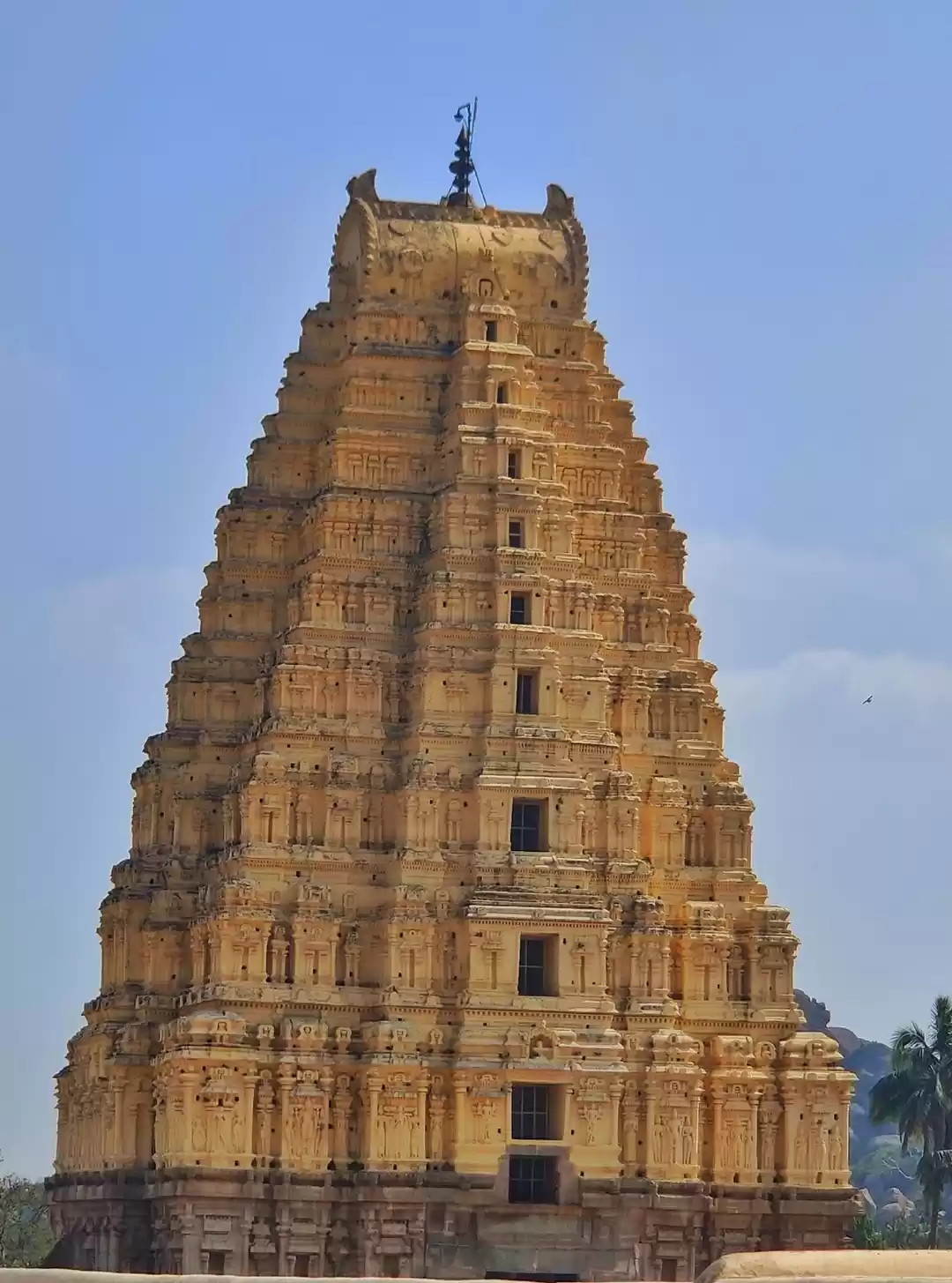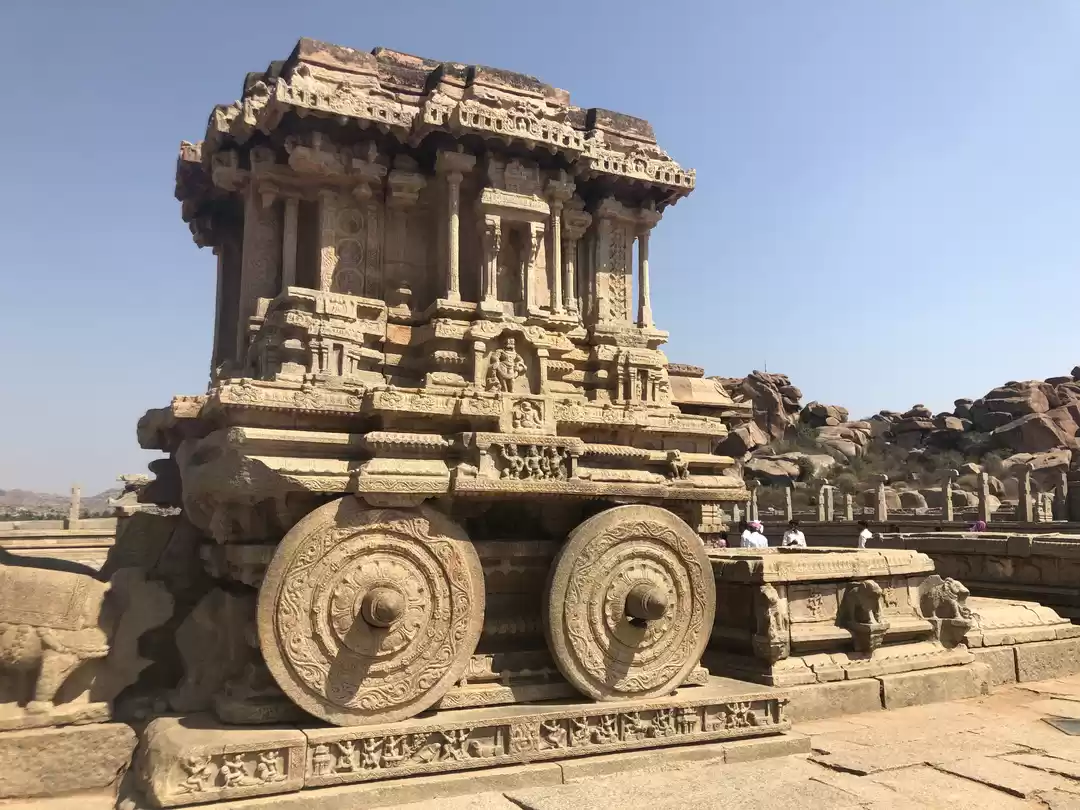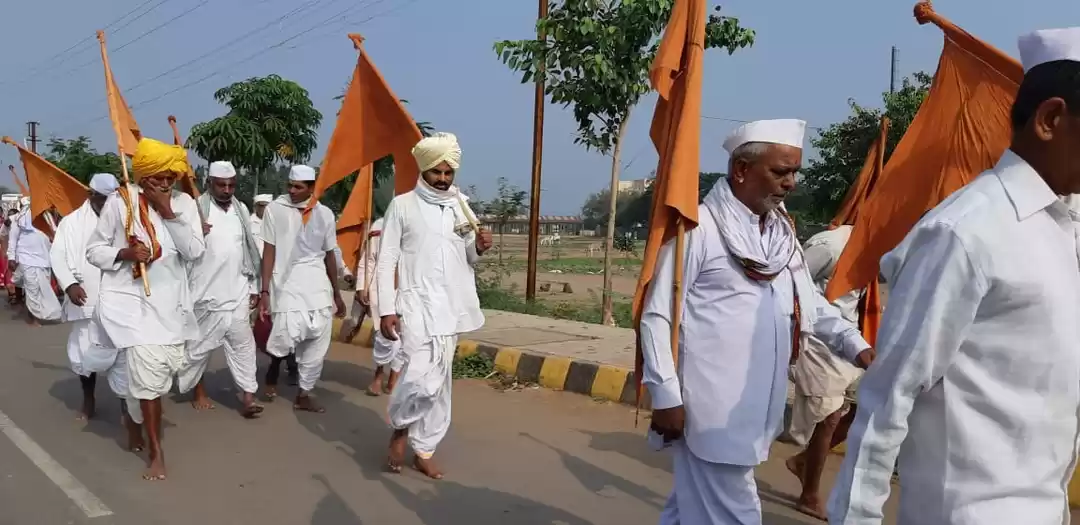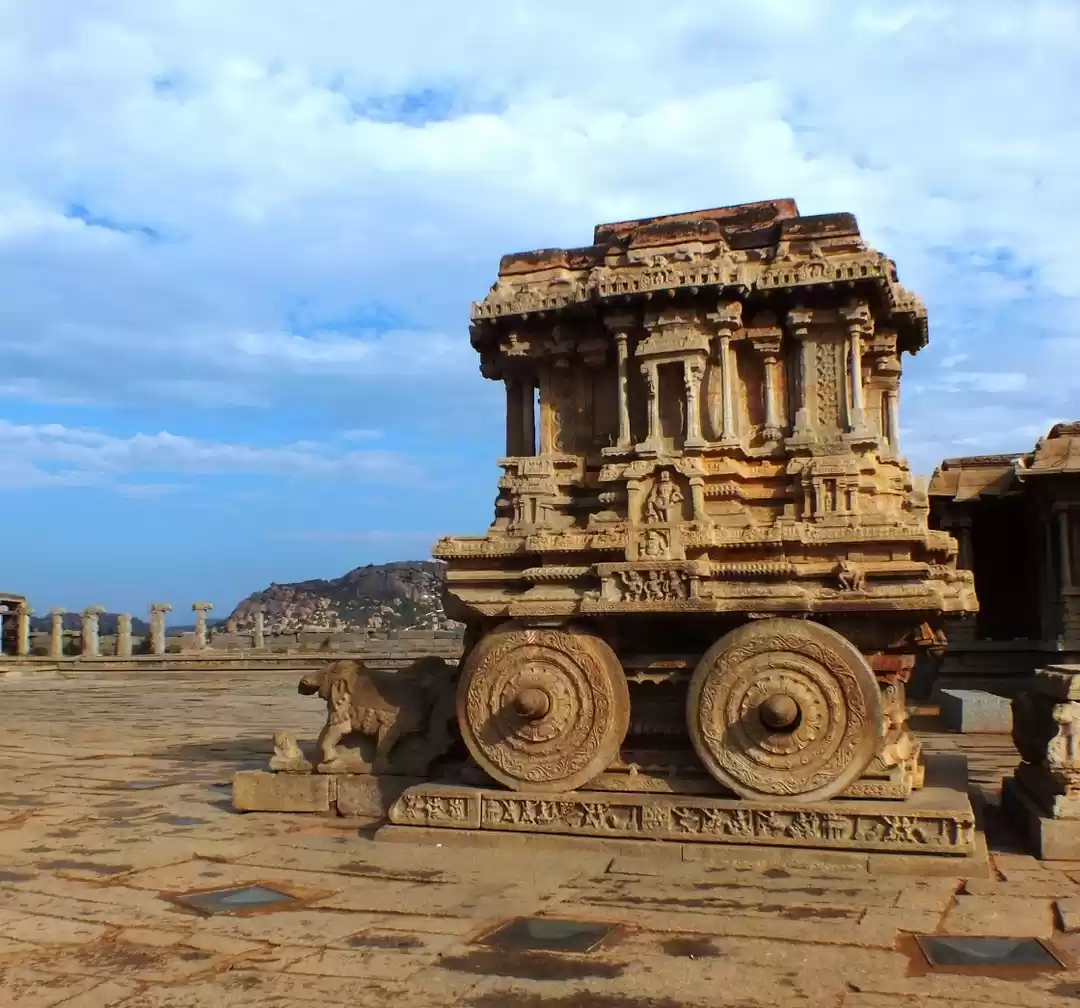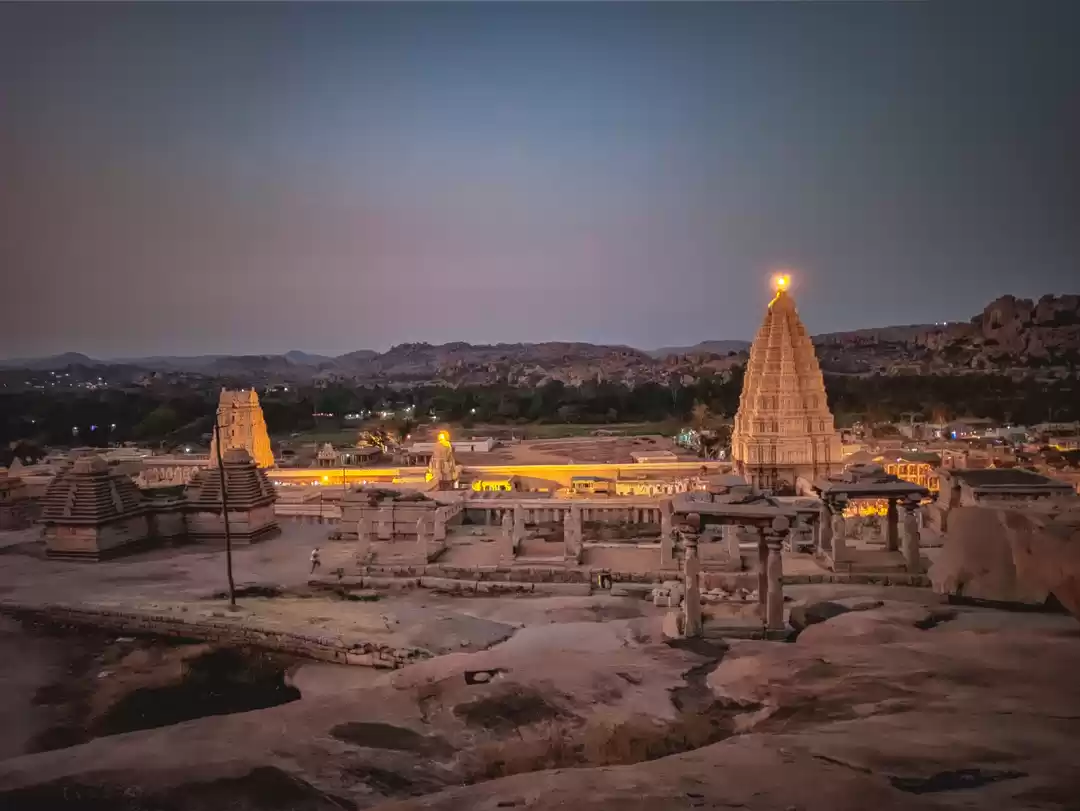









Weathered by time, scarred by the pain of war, touched by the souls of the inhabitants who lived in an otherwordly time, and blessed by millions of Gods who watched over the kingdom - it is remarkable that something so hauntingly beautiful can arise out of something as dispiriting as ruination. Hampi is testimony to the tricks of nature - it creates asymmetry, yet manages to infuse it with such beauty. One can write a ballad about each of the rocks that stand there, some in plaintive fixation and others with the wisdom of a hundred thousand years.
The landscape of Hampi is not easy on the eyes. If you’re one for dreamy green pastures, you will only be welcomed by the startling ruggedness, excepting the occasional green of the paddy fields - but even with the conventional traveller, Hampi promises to grow on you.
Of the many astounding sights that moved me, I would like to list here those few, that will continue to stir my traveller’s soul forever.
-
The Virupaksha temple and surrounding structures
The steep architecture of the Virupaksha sums up the subtle yet rich iconography of South Indian temples. One look at the tapering stone structure and you are struck with the familiar pang of being in the midst of good ol’ South India. The entry fee to the Virupaksha temple ranges from anciently inexpensive to being unabashedly modern - in other words, if you take your camera with you, you have to shell out a fifty per pax. Or else you can get by with the paltry sum of Rs.2/-. The Virupaksha temple is the oldest temple in Hampi and hosts a number of idols of several deities inside, some which seem to have held on to the vagaries of time, and others which might have been salvaged by restorative work. The fact that this is a World UNESCO heritage Site is a boon, and the restorative work carried out in most places has been exemplary and much deserved. Dating back to the Hoysala period, the architect who built it is still a mystery, although it is known that the descendants of the Sangama dynasty, including Krishnadevaraya periodically carried out early renovations during their reign.
The temple complex serves as a puzzling maze as a result of which you will often find yourself torn between taking two directions, even as you jump from one foot to another on the toasty stone tiles in the open complex. This is not surprising, since after a day of soaking in this place, one discovers that this is the way it is with most of Hampi - she is both alluring and elusive - and therein lies most of her mystery. To help break down some of the semiotics of this place - it would be helpful to buy one of the publications on Hampi’s sites from one of the many vendors who throng the temple complex - and if discovering the beauty and the history of the temple at your own pace and on your own terms is something you like, this can be an intriguing exercise in free-flowing exploration. My friend and I did not hire a tour guide at our time in Hampi, figuring along the way that we had more fun unravelling things on our own, building our own theories, sieving endless pieces of ancient history and putting them together.
As you walk along the complex, there are gigantic stone arches to discover and equally gigantic stone doors to touch, only making you increasingly nonplussed about its creation. There are also temples that dot the complex - one of Narasimha, another of Mahishasura Mardini (that we felt especially blessed to visit, on the auspicious day of Dussehra). There is also a canal that flows through the compound of this temple - through which the water of the Tungabhadra runs.
Of the many curious things you will find here, the one I’m about to mention is the most delightful one - the innocuously sweet in-house elephant Lakshmi. Give her a dime and she will return a blessing in the form of a gentle pat on your head with her mighty trunk.
Adjoining the complex, there are a couple of shrines here that house different renditions of Lord Ganesha - the Sasivekalu Ganesh - translated as the ‘Mustard Ganesha’ and the ‘Kadalekalu Ganesh’ - ‘Peanut Ganesh’ (offering a very endearing reason for this moniker - His stomach shaped like a peanut).
-
The Pushkarni
Meaning a stepped water tank that was once used for performing chores in the temple premises, the Pushkarni is a largely underrated architectural mechanism that one can easily miss among other more well-known structures. It would be safe to assume that the number of ‘Pushkarni’s’ in Hampi is directly proportionate to the number of temples here, so you would find many stepped water tanks across several sites in Hampi. The one that I found particularly mesmerizing was the one that we stumbled upon, on the way to the Achyutaraya temple. And to think that we almost missed it at first, relegating its compound to just another random array of stones. We were lucky to stop and look when we did. With not a soul in sight, and only the buzz of the dragonflies to keep us company, we sat at the steps in the sultry mid-morning sun and drank in the beauty of this architectural enigma.
-
The Hazaararama temple
Located in the royal enclosure, the Hazararama temple is a 15th century paradise with evocative wall sculptures - they exhibit stories from the Ramayana, Bhagvat-Gita and select stories of Bala-krishna in a narrative fashion. The stellar carvings run around all the walls of the temple, as well as inside of it - hidden in each of them an architectural prowess, ingenuity and startling symmetry that only the old world was seemingly privy to.
-
The Anjani/Hanuman temple in Anegundi
Anegundi is the famed ‘Kishkinda’ region that lies across the river - the best way to get there would be to take the treacherous yet fitting round boat through the Tungabhadra - a feat we unfortunately could not manage owing to the rising levels of water in the river. The next best thing would be to take a vehicle (we hired a rickshaw and loved every bit of it!) from Hampi that will take you through the highway...and through surreal, unending paddy fields.
Now - how do you begin to describe a place that was graced by the presence of God? The Anjani temple in Anegundi is the birthplace of Hanuman, the brave monkey god. Cynical or not, being there after a 570-step-climb will demand that your heart believe this lore. Being inside of this temple, most probably carved out of a cave, is a humbling experience. Legend has it that the Kishkinda region was reigned by mortal Gods in the form on monkeys (yes, monkeys!)...when Lord Rama came here on foot searching for Sita, it was in this place that the monkey army convened and set out to build the Ram Setu to Sri Lanka.
Other mythological wonders here include the cave of Bali and Sugreeva, and the temple with Lord Rama’s footprints (where Lord Rama lay to rest during one of his many endeavors to find Sita on foot)
-
The Achutaraya temple complex and the Vitthala temple complex
The long walk to the Achyutaraya temple is riddled with vast expanses of breathtaking boulder art curated by nature, and with them humble shrines built by erstwhile residents of the Vijaynagara kingdom. Most shrines here lie with isolated sanctums, the idols far long gone - likely at the time that the kingdom was invaded and pillaged by the Mughals. The magnificent Varaha temple, is one of them - most likely built in honor of the Varaha or the ‘wild boar’ that featured on the royal emblem of the Sangama dynasty.
Further down this path is the King Krishnadevaraya’s balance - legend goes that he distributed to the poor gold worth his weight. Throughout Hampi, Krishnadevaraya’s presence and participation in the upkeep of the kingdom is apparent, as is his inclination toward cultural influence - he invited explorers from over the world to write about his magical kingdom.
There is an entry fee to the Vitthala temple complex that also gives access to the Hampi museum, as well as the royal enclosures - the Mahanavami Dibba, the King’s open durbar, the elephant stables, and the Queen’s Lotus Mahal.
The major attraction here is the majorly iconic structure of the stone chariot, carved from the Quartz stone - inspired by the Konark sun temple in Orissa. Paying attention to walls and pillars, and finding themes across the patterns becomes necessary - Hampi is all about acknowledging the details and appreciating the ornate - pay obeisance to these and you will be rewarded with the discovery of an ancient nugget (such as the beautifully carved rendition of the Dashavatara carved onto the 4 sides of a pillar).
Long after my return, Hampi visits me in my dreams still. Sometimes she comes as the memory of the cool stone in a forgotten temple, sometimes the sound of the petulant Tungabhadra, retreating to the rocks that patiently await...and sometimes it is just the pervading element of stillness that exists there….calming, soothing, gently persuading you to slow down.
A few sights manage to stir your soul - the beauty of those things lie in the fact that they will never let you forget what you saw, for not just their images, but the stories behind them - of what they are now, and what they were once, will be miraculously imprinted in your memory forever. They are imprinted in a way that life as you knew it will somehow seem different. And at the end of it, you will feel lucky to have felt that way, you will feel grateful to the sights that touched your eyes, graced your soul and filled your mind with a feeling as sublime as this.



